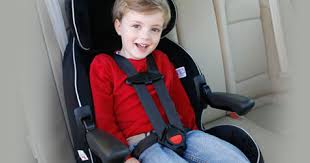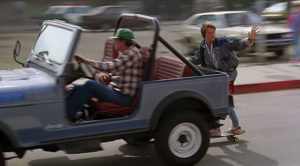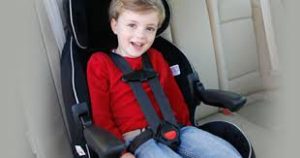Most people know this but some people don’t – it is dangerous to have your baby wear a jacket or large piece of clothing in a car seat or booster seat. This is because in the event of a car accident, your baby may not be securely fastened to the car seat and be seriously injured.
 The large coat or extra clothing on the baby may seem snug against the straps of a car seat but in a car accident the baby will not be restrained and in fact fly through the straps and possibly be seriously injured. The extra fabric doesn’t act as an extra barrier and in fact acts as a loose, false barrier that doesn’t hold the baby in.
The large coat or extra clothing on the baby may seem snug against the straps of a car seat but in a car accident the baby will not be restrained and in fact fly through the straps and possibly be seriously injured. The extra fabric doesn’t act as an extra barrier and in fact acts as a loose, false barrier that doesn’t hold the baby in.
Yes, it can be annoying to take your baby out of the jacket or large sweater and then have to put it back on, but it is for the protection of your baby in the event of a car accident. You may even think that you are only traveling for a short drive but this should not convince you to allow it. Car accidents can happen at any time and any place. All it takes is one person not paying attention to your car being stopped or someone in a hurry and a car accident happens. Don’t risk your baby’s health for the inconvenience of taking him or her out of a jacket or coat.
If your baby did fall out of the car seat with a jacket on in a Seattle car accident, unfortunately it is your fault and not the car seat manufacturer. You must follow proper protocol and manufacturer’s intended usage. A Seattle personal injury lawyer will walk you through your options in a car accident injury case but you may hurt your case by not securely fastening your child in his or her car seat.



 The reason behind using a car seat or booster seat and when to graduate your child is to keep our children safe in car accidents. A normal seat belt will not protect a child that is too small to actually realize the safety benefit of the seat belt, like full grown adults can. The reason is that seat belts are positioned with restraints for an adult and are not adjustable for a small child. The child could fall through the straps if there is a car accident and be severely injured.
The reason behind using a car seat or booster seat and when to graduate your child is to keep our children safe in car accidents. A normal seat belt will not protect a child that is too small to actually realize the safety benefit of the seat belt, like full grown adults can. The reason is that seat belts are positioned with restraints for an adult and are not adjustable for a small child. The child could fall through the straps if there is a car accident and be severely injured.